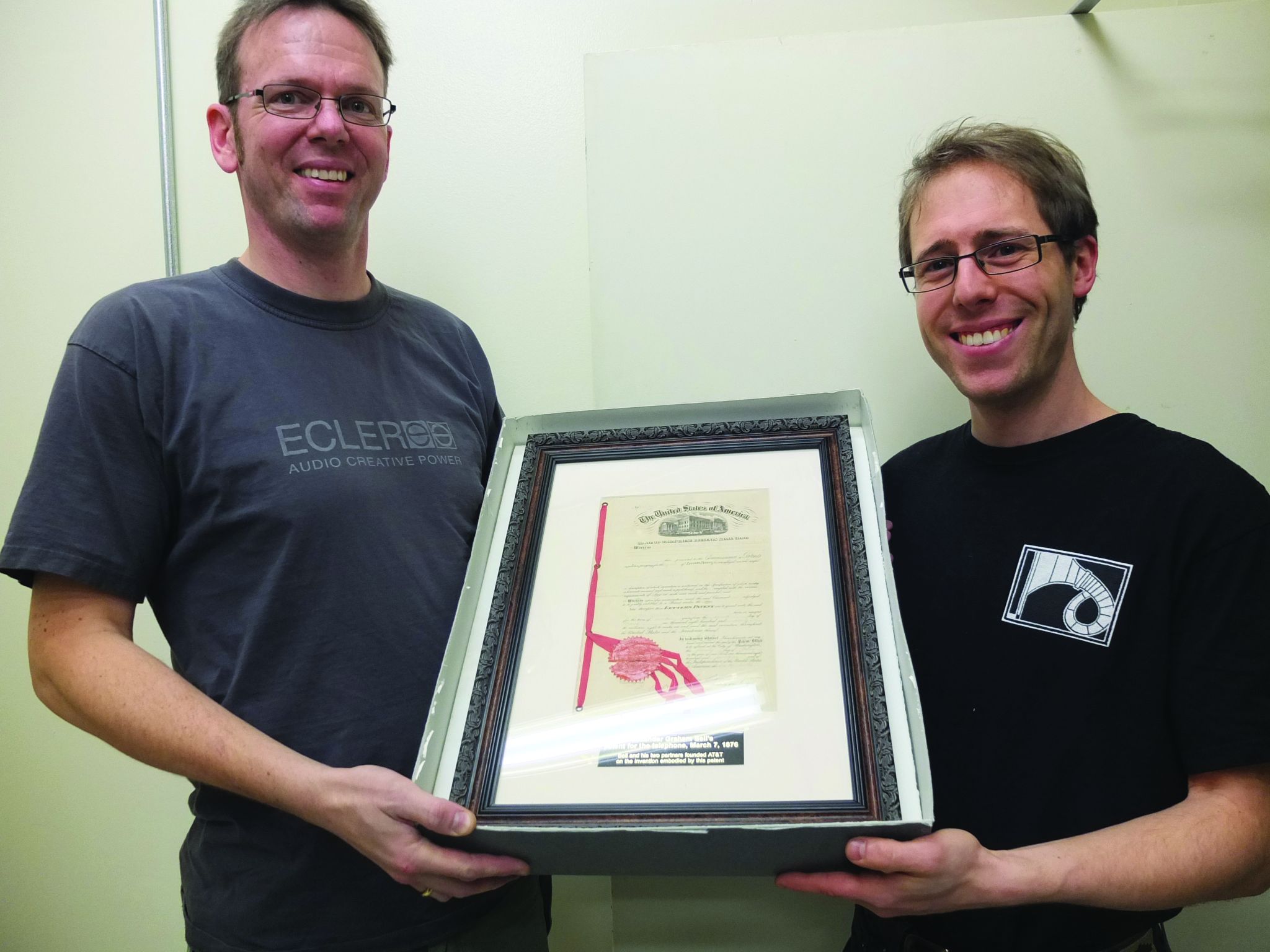We should of course properly introduce ourselves:
Bjørn Kolbrek, Ph.D, doctored at the NTNU in Trondheim, Norway with his dissertation "Extensions to the Mode Matching Method for Horn Loudspeaker Simulation" in 2016. He has published several papers related to horn speakers, and these are listed on his home page. Before his academic studies he was an R&D engineer working on electronic control systems for marine machinery in a Norwegian company. In his childhood he dreamed about building his own radar, got into ham radio and tube electronics and happened to get interested in horn speakers in the late 1990s. Bjørn sorts out the math and the heaviest theory and has written the theory sections of the book. He has also worked on horn simulation software development for at least as long as we have collaborated on horn speaker research. Bjørn went professional on horn speakers as he was practically employed by Celestion in the UK before finally doctoring at the NTNU.
Thomas Dunker is an audio enthusiast known by some to have operated a web page on horn speakers in the mid 1990s. While the web page was unfortunately a bit short lived, the interest in horn speakers never waned, and experiments and research continued as life's twists and turns permitted. Like Bjørn, Thomas is also a passionate audio experimenter and DIY'er, though has remained an "amateur" in the true sense of the word: "a person who pursues a particular activity or field of study independently from their source of income", according to Wikipedia, meaning he is not a "pro", but still has studied the subject of horn speakers for more than 25 years on and off. The history writing in the book has been his main contribution to the manuscripts in terms of text, but Bjørn has also contributed enormously to the history parts.
The two of us got to know each other by e-mail in 2004 and have collaborated on horn speaker research ever since, having found that we were both looking for answers to some of the same questions and both having studied the theory of horn speakers for some time and collecting literature. The idea to write a book was something of a no-brainer after a while, as the collection of papers mounted and we were getting progressively deeper into the matter. It seemed the obvious way to organize our material and turn it into a comprehensive summary of our studies, for easier lookup - and to share it with fellow enthusiasts, while filling a gap in every audio technology library. We were not so sure how voluminous it would end up, but were not surprised to end up around 1000 pages as we ultimately did. Our collaboration and countless discussions over the years have shaped the outcome of the project in many ways as we together bit into vast amounts of knowledge andinformation spanning more than a century.

Thomas (left) and Bjørn (right) with A. G. Bell's original telephone patent during our 2013 visit to the AT&T Archives.
We also have a common connection with a community of enthusiasts who have congregated on a listserv mailing list launched by Joe Roberts, then the editor of Sound Practices, an audio journal, in the early 1990s. (How different the Internet was back then! How we miss the magazines, too...) Many of these good people also still get together at the European Triode Festival each year. Naturally a lot of what goes on there is about triode amplifiers, high efficiency and horn loudspeakers and analog audio technology. An unusual community of dedicated, knowledgeable people sharing wisdom and ideas, listening to music together and some times having the most unbelievable discussions.
Numerous discussions, meetings and connecting with people over a long period of time also have had their influence on our inspiration and direction of research. We have dedicated our book to the memory of our late friend Jean-Michel Le Cléac'h, who was one of those most inspiring people and a true horn enthusiast in our circle back 20 years ago, belonging in our aforesaid international community. "Triodes and horns" audio culture was truly going global in the 1990s thanks to Sound Practices and with the spread of the Internet. Part of that wave also hurled people like us into serious investigations of horn speaker technology, while others went to the outer limits of tube amplification, audio transformer design or other relevant aspects of earlier audio technology, working to refine it, and when possible, advancing it with present day means. A most fascinating pursuit, to those involved. Including ourselves.
While a fortunate chain of events and circumstances can explain how we first met and were introduced, our lengthy collaboration and ultimately producing the book is also much thanks to the fact that were are both patient and persistent enough to go through with such a long term commitment. It's been a long haul... We assure you, the book is also easily as demanding as it will be rewarding. We wrote it in an effort to systematize a vast amount of knowledge, history and information, and we are just waking up to the book now finding its way into our libraries, making available a rather stunning amount of information "for easy reference".
Bjørn and Thomas

